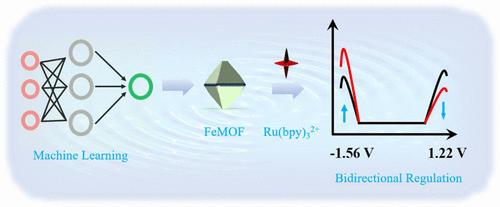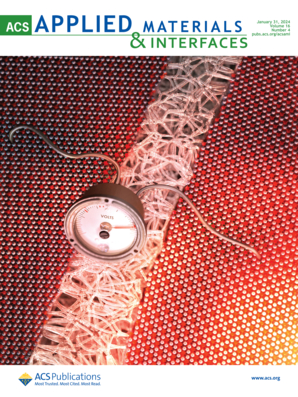Using Machine Learning to Design a FeMOF Bidirectional Regulator for Electrochemiluminescence Sensing of Tau Protein
IF 8.3
2区 材料科学
Q1 MATERIALS SCIENCE, MULTIDISCIPLINARY
引用次数: 0
Abstract
The single-luminophore-based ratiometric electrochemiluminescence (ECL) sensor coupling bidirectional regulator has become a research hotspot in the detection field because of its simplicity and accuracy. However, the limited bidirectional regulator hinders its further development. In this study, by leveraging the robust predictive capabilities of machine learning, we prepared an Fe-based metal–organic framework (FeMOF) as a bidirectional regulator for modulating the dual-emission ECL signals of a single luminophore for the first time. The proof of concept was demonstrated by applying FeMOF to the classical luminophore Ru(bpy)32+, and the results showed its ability to enhance the cathode ECL signal (Ecathode) and inhibit the anode ECL signal (Eanode). As an example, a ratiometric ECL sensor for Tau protein (Tau) detection utilizing the FeMOF/Ru(bpy)32+ system was developed. The incorporation of a bidirectional regulator in the ECL system effectively mitigated erratic fluctuations or minor discrepancies between the two signals and showed a stronger correlation and stability of Ecathode/Eanode than before regulation. As a result, the ECL sensor showed good analytical performance with a detection limit as low as 3.38 fg mL–1 (S/N = 3). Moreover, it was not only comparable in test results to the commercially available ELISA kit but also could well distinguish between normal and Alzheimer’s disease (AD) patients (80% specificity and 90% sensitivity). Thus, the proposed strategy is promising to be extended to other ECL luminophores or MOFs, providing a new path for ratiometric ECL sensors.

求助全文
约1分钟内获得全文
求助全文
来源期刊

ACS Applied Materials & Interfaces
工程技术-材料科学:综合
CiteScore
16.00
自引率
6.30%
发文量
4978
审稿时长
1.8 months
期刊介绍:
ACS Applied Materials & Interfaces is a leading interdisciplinary journal that brings together chemists, engineers, physicists, and biologists to explore the development and utilization of newly-discovered materials and interfacial processes for specific applications. Our journal has experienced remarkable growth since its establishment in 2009, both in terms of the number of articles published and the impact of the research showcased. We are proud to foster a truly global community, with the majority of published articles originating from outside the United States, reflecting the rapid growth of applied research worldwide.
 求助内容:
求助内容: 应助结果提醒方式:
应助结果提醒方式:


